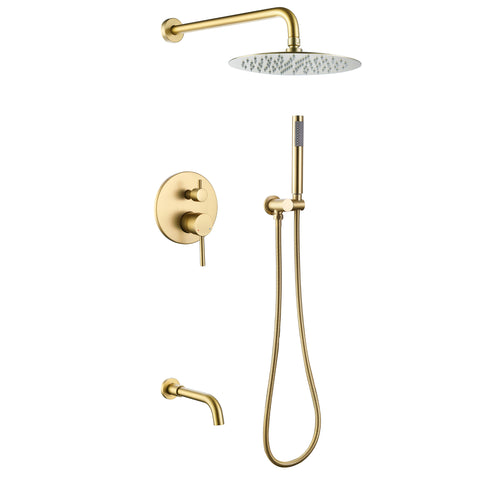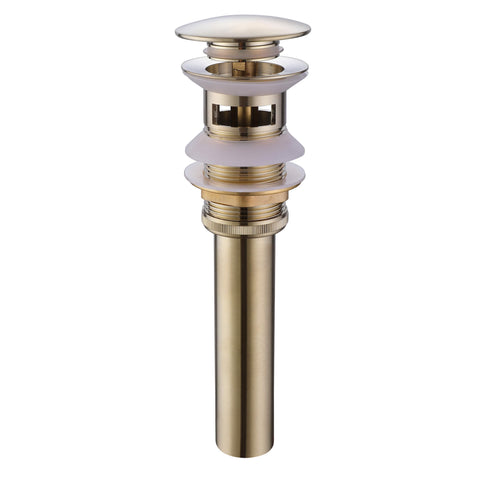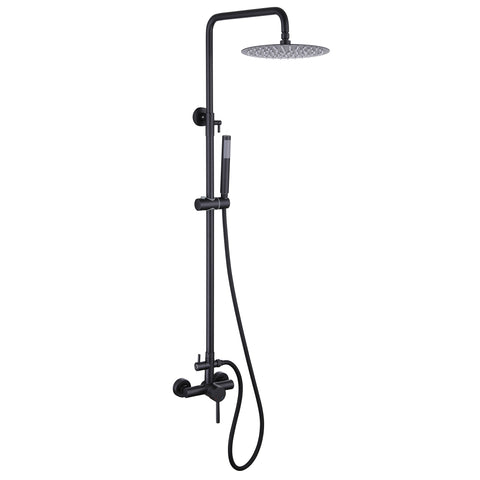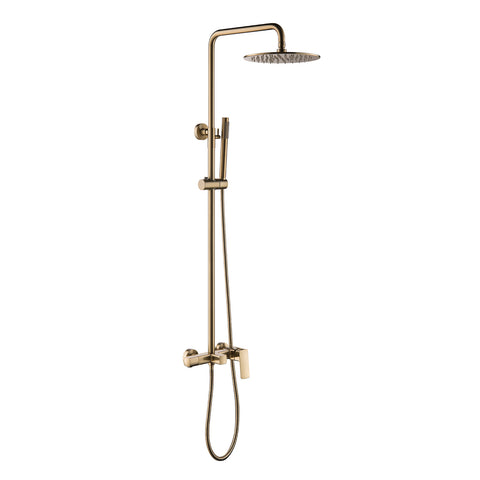How To Install a Freestanding Tub Faucet on Concrete: A Step-by-Step Guide
Materials Needed:
- Freestanding tub faucet kit
- Adjustable wrench
- Plumber's tape (Teflon tape)
- Silicone sealant
- Drill
- Concrete drill bit
- Hammer drill (if needed)
- Measuring tape
- Pencil or marker
- Safety goggles and gloves
- Level
- Anchors and screws (if not included in the faucet kit)
Step 1: Choose the Right Location
Before you begin, determine the optimal location for your freestanding tub faucet. Consider factors such as the tub's position, accessibility, and personal preference. Ensure the faucet is positioned correctly for easy access and functionality.
Step 2: Gather Tools and Faucet Kit
Collect all the necessary tools and the freestanding tub faucet kit. Check the kit to ensure it includes all the required components, including the faucet, supply lines, and installation hardware. Read the manufacturer's instructions thoroughly before proceeding.
Step 3: Mark Drill Holes
Using a measuring tape and pencil, mark the positions for the drill holes on the concrete floor. Ensure these marks align with the faucet's base plate or mounting bracket. Use a level to double-check the accuracy of your markings.
Step 4: Drill Holes in Concrete
If your concrete is particularly hard, you might need a hammer drill for this step. Insert a concrete drill bit into your drill and begin drilling at the marked positions. Make sure to use the appropriate size of drill bit specified in the manufacturer's instructions. Drill to the recommended depth, usually around 2-3 inches, to ensure a secure anchor.
Step 5: Insert Anchors
Insert plastic or metal anchors into the drilled holes. Gently tap them with a hammer until they are flush with the concrete surface. These anchors will provide a stable base for securing the faucet.
Step 6: Attach Faucet Base
Place the faucet's base plate or mounting bracket over the drilled holes, aligning them with the anchors. Secure the base plate to the concrete by inserting screws through the plate and into the anchors. Use an adjustable wrench to tighten the screws, ensuring a snug fit.
Step 7: Assemble Faucet
Follow the manufacturer's instructions to assemble the faucet. Apply the plumber's tape (Teflon tape) to the threaded connections for a watertight seal. Attach the supply lines to the faucet and ensure they are securely fastened.
Step 8: Connect Supply Lines
Position the assembled faucet over the base plate and connect the supply lines to the appropriate water outlets. Hand-tighten the connections and then use an adjustable wrench to give them a final snug turn, being careful not to over-tighten.
Step 9: Apply Silicone Sealant
To prevent water leakage, apply a bead of silicone sealant around the base of the faucet where it meets the concrete. This will create a watertight seal and ensure no moisture seeps through.
Step 10: Test and Adjust
Turn on the water supply and test the faucet for any leaks. If you notice any leaks, tighten the connections slightly. Use a level to make any necessary adjustments to the faucet's alignment to ensure it stands perfectly straight.
Conclusion:
Installing a freestanding tub faucet on concrete is a rewarding DIY project that can enhance the beauty and functionality of your bathroom. By carefully following these step-by-step instructions and the manufacturer's guidelines, you can successfully complete the installation and enjoy a stylish, functional, and luxurious addition to your bathing space. Remember, safety first—wear appropriate gear and take your time to ensure a job well done.













